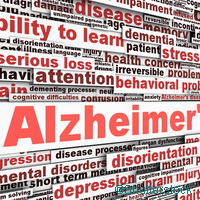One step closer to curtailing the rise in Alzheimer's
Researchers believe they are closer to curtailing the rise in Alzheimer's disease (AD) with early and accurate diagnostic tests and treatments. Developments were unveiled at Neuroscience 2012, the annual meeting of the Society for Neuroscience (the world's largest source of emerging news about brain science and health). These included medical imaging, molecular analysis of neurological diseases and the development of treatments using mouse models. Scientists at the meeting presented a brain imaging 'probe' devised to detect the earliest stages of the disease. The probe works by binding to a protein called amyloid, a key feature of Alzheimer's. Researchers at Northwestern University and the University of Illinois in the United States developed the probe using an antibody that binds to amyloid, which is known to clump together in the brain and become toxic during Alzheimer's. The researchers then combined this antibody with magnetic nanoparticles that show up during magnetic resonance imaging (MRI) scans. Current brain scanning techniques only detect amyloid in the brain once it has formed into large, sticky plaques, but the researchers hope their new probe will help detect the toxic form of amyloid before these plaques have formed, in order to identify people with Alzheimer's at a much earlier stage. The scientists aim to develop a way of delivering the probe - which has so far been tested in the lab and in rodents - using a nasal spray. Other interesting findings to emerge at the meeting included: revealing how changes in brain function can be detected by positron emission tomography (PET) scans, which might one day be used to identify people at risk of developing the disease; and a new drug that targets biochemical changes in proteins, which has so far improved symptoms and increased survival in a mouse model with AD - although just how it works is not yet known. Also, a new mouse model for the disease has given researchers more control over an Alzheimer's-related protein in mice, which could lead to better research on effective treatments. There are an estimated 35.6 million people with Alzheimer's or dementia worldwide. This number is expected to nearly double every 20 years, to an estimated 65.7 million in 2030, and rise to 115.4 million in 2050. Much of the increase will be in developing countries. Already, 58 % of people with dementia live in developing countries, but by 2050 this will rise to 71 %. The fastest growth in the elderly population is taking place in China, India and their south Asian and western Pacific neighbours. 'Being able to detect AD early-perhaps even before symptoms begin-is an essential pre-condition if we are to develop effective treatments that slow or stop the changes that occur in the brain during Alzheimer's. Our studies in mice already tell us this,' said press conference moderator Sam Gandy, PhD, MD, of the Mount Sinai School of Medicine in New York City and an expert on AD and dementia. 'Being able to distinguish AD from other neurodegenerative diseases will help us give the right treatments to the right patients.'For more information, please visit:Neuroscience 2012:http://www.sfn.org/am2012/
Countries
United States

